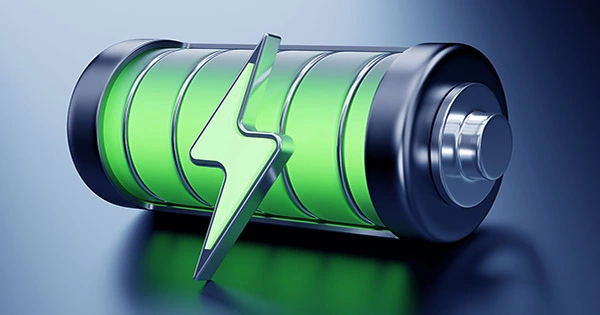Texas A&M University researchers have shown that the storage capacity of metal-free, water-based battery electrodes varies by 1,000%.
These batteries are distinct from cobalt-containing lithium-ion batteries. Since cobalt and lithium are imported, the group’s motivation for studying metal-free batteries is to have more control over the domestic supply chain. Additionally, this safer chemical would stop battery fires.
Dr. Daniel Tabor, an associate professor of chemistry, and Dr. Jodie Lutkenhaus, a professor of chemical engineering, have published their research on lithium-free batteries in Nature Materials.

“Because it’s water-based, there would be no battery fires,” Lutkenhaus explained. “If material shortages are predicted in the future, the price of lithium-ion batteries will skyrocket.” If we have this alternate battery, we can switch to this chemistry, where the supply is considerably more reliable since we can produce them here in the US and the ingredients to build them are available.”
According to Lutkenhaus, aqueous batteries are made up of a cathode, an electrolyte, and an anode. The cathodes and anodes are energy-storing polymers, while the electrolyte is water combined with organic salts. Through its interactions with the electrode, the electrolyte plays an important role in ion conduction and energy storage.
She said that if an electrode expands excessively when cycling, it won’t be able to conduct electrons very effectively and all of the performance would be lost. “I think that depending on the electrolyte choice and swelling effects, there is a 1,000% difference in energy storage capacity.”
According to their study, the high discharge voltage and quick redox kinetics of redox-active, non-conjugated radical polymers (electrodes) make them ideal candidates for metal-free water batteries. Because electrons, ions, and water molecules are all being transferred at once, the process is complicated and challenging to understand.
The authors of the study explain that they used an electrochemical quartz crystal microbalance with dissipation monitoring across a variety of durations to examine aqueous electrolytes with varied chao-/kosmotropic character in order to “demonstrate the nature of the redox reaction.”
The experimental work was supplemented by computational modeling and analysis carried out by Tabor’s research team. The simulations provided information on the structure and behavior at the tiny molecule scale.
“In order to understand these materials, theory and experiment frequently collaborate closely.” “One of the novel computational things we do in this paper is charged up the electrode to multiple states of charge and see how the surroundings respond to this charging,” Tabor explained.
By precisely monitoring the amount of water and salt entering the battery while it is functioning, researchers were able to macroscopically determine if the battery cathode performed better when certain types of salts were present.
He remarked, “We did it to explain what has been experimentally seen. “Right now, we want to include future systems in our simulations. We need confirmation of our theory on the forces guiding this type of water and solvent injection.
By precisely monitoring the amount of water and salt entering the battery while it is functioning, researchers were able to macroscopically determine if the battery cathode performed better when certain types of salts were present.
He remarked, “We did it to explain what has been experimentally seen. “Right now, we want to include future systems in our simulations. We need confirmation of our theory on the forces guiding this type of water and solvent injection.
“This new energy storage technology is a step toward lithium-free batteries.” “We now have a clearer picture at the molecular level of what makes some battery electrodes perform better than others, and this gives us strong evidence for where to go next in materials design,” Tabor added.
















